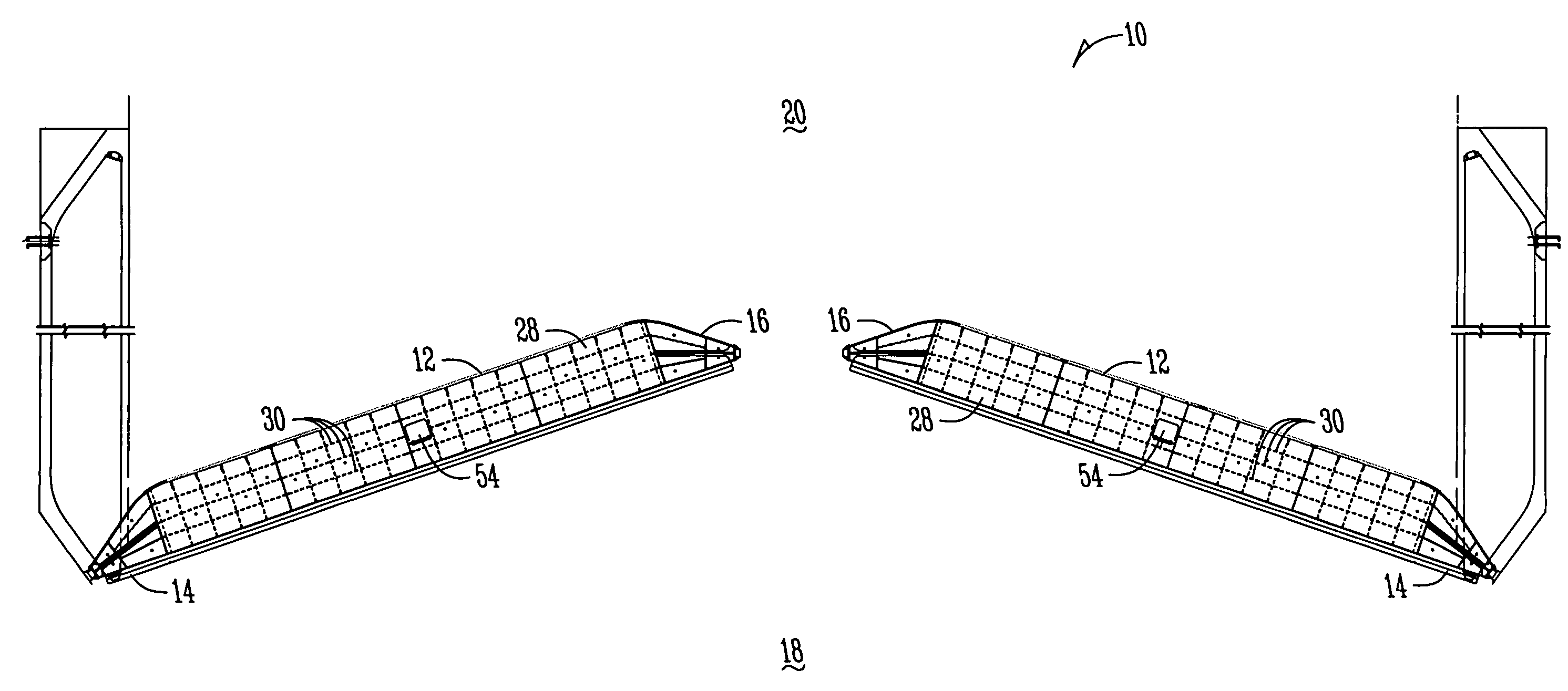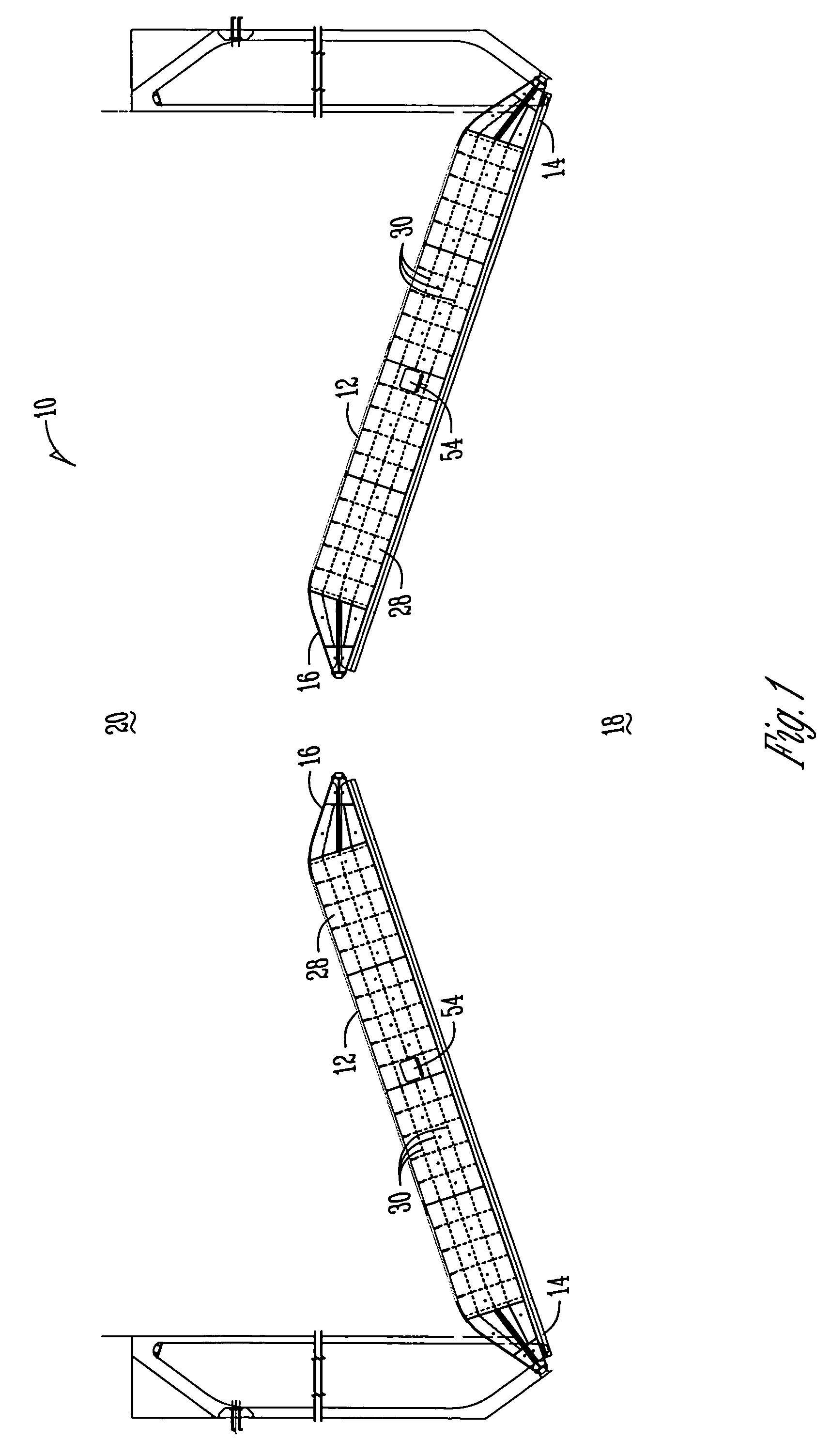Method and apparatus for an improved lock and dam assembly
a technology of lock and dam and miter gate, which is applied in the direction of barrage/weir, marine site engineering, construction, etc., can solve the problems of linear cracking, high stress on the web plate, and large force required for closing the system, so as to minimize the strain on the web plate
- Summary
- Abstract
- Description
- Claims
- Application Information
AI Technical Summary
Benefits of technology
Problems solved by technology
Method used
Image
Examples
Embodiment Construction
[0024]The present invention will now be described according to its preferred embodiment. It should be understood that the present invention is not limited to the embodiment described.
[0025]As is shown in FIG. 1, the preferred lock and dam system 10 includes at least one, and usually a plurality of gates 12. The gates 12 have what are commonly referred to as a quoin end 14 and a miter end 16. In operation, the gates 12 rotate at the quoin end 14 and come together at the miter end 16. When the gates 12 come together, they block flow of water from the upstream location 20 to the down stream location 18 thereby allowing the controlling authority, typically a unit of the Army Corps of Engineers, to control the level of water in the lock and dam system 10.
[0026]Each gate 12 in the lock and dam system is typically made of a number of elements. Most of the elements are preferably A709 Gr. 50 steel. For example, a typical gate 12 includes a number of girders 22 assembled through welding and ...
PUM
 Login to View More
Login to View More Abstract
Description
Claims
Application Information
 Login to View More
Login to View More - R&D
- Intellectual Property
- Life Sciences
- Materials
- Tech Scout
- Unparalleled Data Quality
- Higher Quality Content
- 60% Fewer Hallucinations
Browse by: Latest US Patents, China's latest patents, Technical Efficacy Thesaurus, Application Domain, Technology Topic, Popular Technical Reports.
© 2025 PatSnap. All rights reserved.Legal|Privacy policy|Modern Slavery Act Transparency Statement|Sitemap|About US| Contact US: help@patsnap.com



